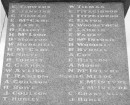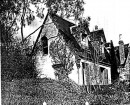Back to search results
YARRA BEND PARK
YARRA BEND ROAD FAIRFIELD, YARRA CITY
YARRA BEND PARK
YARRA BEND ROAD FAIRFIELD, YARRA CITY
All information on this page is maintained by Heritage Victoria.
Click below for their website and contact details.
Victorian Heritage Register
-
Add to tour
You must log in to do that.
-
Share
-
Shortlist place
You must log in to do that.
- Download report

2019 Location of the Original Yarra Bend Asylum



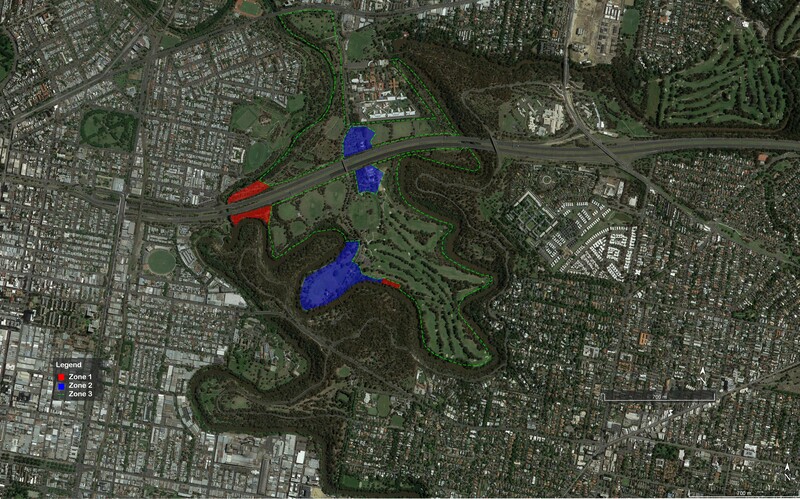

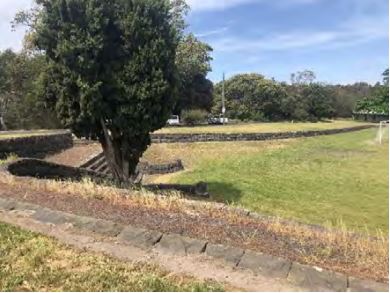
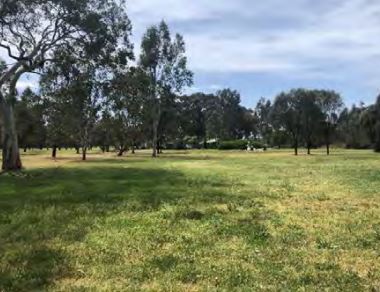

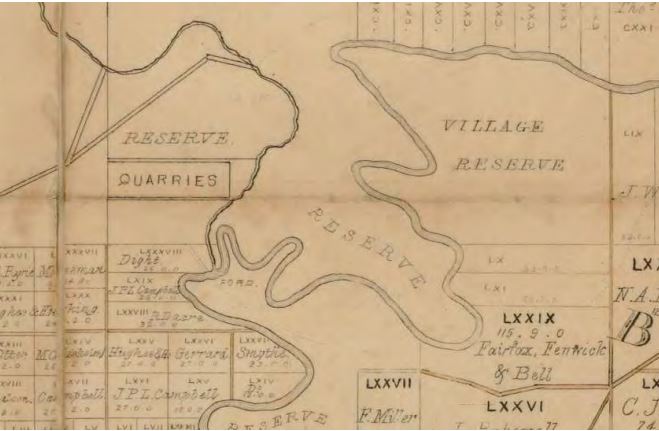
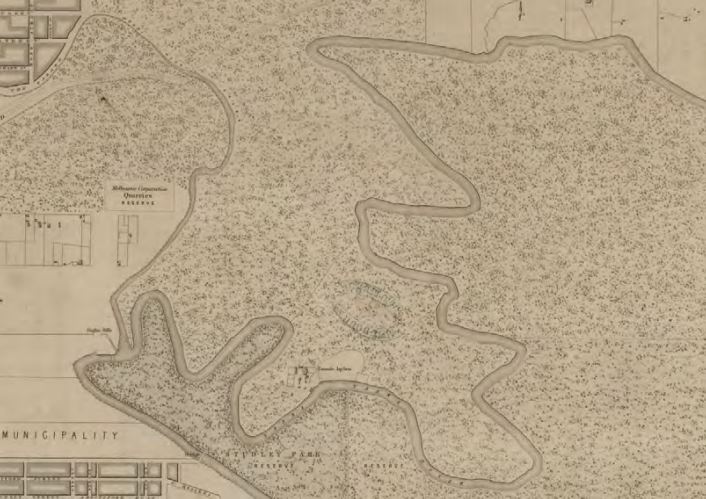
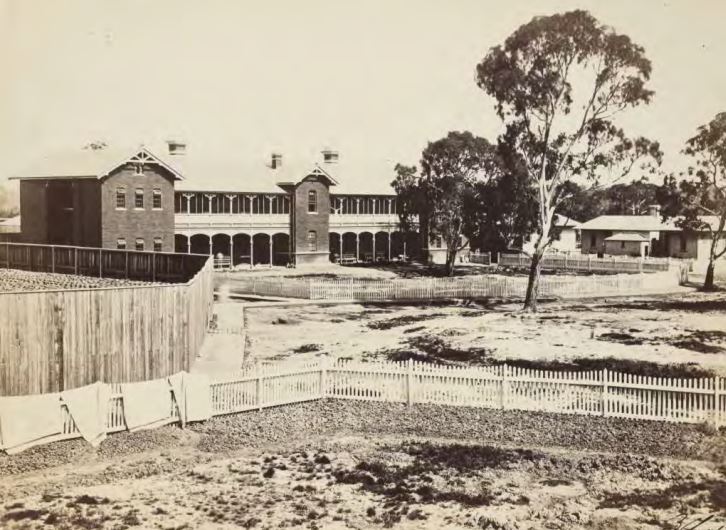
On this page:
Statement of Significance
Yarra Bend Park is located on Wurundjeri Country.
What is significant?
The Yarra Bend Park including all the land, trees, plantings, open parkland, roads and paths, asylum gate pillar, golf club house and course, and all archaeological deposits associated with the former Merri Creek Protectorate Station, Merri Creek Aboriginal School, Native Police Corps Headquarters, the Yarra Bend Lunatic Asylum, Fairhaven Venereal Disease Clinic and Fairlea Women's Prison.
How is it significant?
Yarra Bend Park is of historical and archaeological significance to the State of Victoria. It satisfies the following criterion for inclusion in the Victorian Heritage Register:
Criterion A
Importance to the course, or pattern, of Victoria’s cultural history.
Criterion B
Possession of uncommon, rare or endangered aspects of Victoria’s cultural history.
Criterion C
Potential to yield information that will contribute to an understanding of Victoria’s cultural history.
Why is it significant?
Yarra Bend Park is significant at the State level for the following reasons:
Yarra Bend Park is historically significant for its associations with a number of government initiated and/or operated institutions from the mid-nineteenth to the late-twentieth centuries and for its long association with active and passive recreational use.
Aboriginal cultural connection pre-existed the formation of Melbourne by tens of thousands of years. Yarra Bend Park is historically significant as a place of contact and interaction between Aboriginal and non-Aboriginal people in the formative years of Victoria’s development. This resulted in the establishment of institutions near the confluence of Merri Creek and the Yarra River, including the Merri Creek Protectorate Station, Merri Creek Aboriginal School and Native Police Corps Headquarters.
Yarra Bend Park is significant for its associations with Billibellary, Ngurungaeta (leader) of the Woi wurrung (who was buried near the confluence of the Yarra River and Merri Creek in 1846) and Assistant Protector William Thomas. Their mutually respectful relationship, which extended to Billibellary’s son Simon Wonga, was instrumental in the negotiation of land for Aboriginal people, which led to the establishment of Coranderrk Aboriginal Station near Healesville.
Yarra Bend Park is significant as the location of Victoria’s first asylum. The Metropolitan Lunatic Asylum, later known as the Yarra Bend Lunatic Asylum, was the first asylum established in Victoria in 1848 and was constructed in a ‘village style’.
Yarra Bend Park is historically significant for the ongoing development of facilities for active and passive recreational use, including open parkland, walking tracks and sporting grounds
(Criterion A)
Yarra Bend Park is an uncommon example of an expansive inner-city area which has remained largely undeveloped and retains a high potential for significant archaeological evidence of government initiated and/or operated institutions.
(Criterion B)
Yarra Bend Park is archaeologically significant for its potential to contain features, deposits and/or artefacts that relate to various government initiated and/or operated institutions, their establishment, use and change over time, and landscape and garden features. As a place of intensive institutional use, Yarra Bend Park has a high potential to contain a well-preserved and distinct historical archaeological landscape, which has high potential to provide information which is not currently understood.
(Criterion C)
Show more
Show less
-
-
YARRA BEND PARK - History
Yarra Bend Park has a multi-layered post-contact history beginning with the use of the place for a variety of government initiated and/or operated institutions in the 1840s. These included the former Merri Creek Protectorate Station, Merri Creek Aboriginal School, Native Police Corps Headquarters and the Yarra Bend Lunatic Asylum, and later, Fairhaven Venereal Disease Clinic and Fairlea Women's Prison. These institutions reflect early interactions between Aboriginal and non-Aboriginal people, and the management of mental health, disease treatment and criminal justice. Yarra Bend Park is also recognised as a place with a long-history of public recreation from the early twentieth century to the present day.
Government initiated and/or operated institutions
Merri Creek Protectorate Station, Merri Creek Aboriginal School and the Native Police Corps (c.1842- 1851)
Yarra Bend Park was set aside for public use in the late 1830s as a government reserve. The Merri Creek Protectorate Station, Merri Creek Aboriginal School and the Native Police Corps were established at the confluence of Merri Creek and the Yarra River from 1842. William Thomas, Assistant Protector responsible for the Western Port or Melbourne District of the Port Phillip Aboriginal Protectorate, initially built a hut at the location in late 1842 following the abandonment of Nerre Nerre Warren Protectorate Station (VHR H2348). From 1842 many of protectorate functions were transferred from Nerre Nerre Warren to Merri Creek. The location, however, was deserted by the Woiwurrung people following an influenza epidemic in 1847. The Protectorate was abolished in December 1849. From June 1842 until September 1843 the location was also used as the temporary headquarters of the Native Police Corps under the command of Captain Henry Dana.
In 1845 a permanent day school was established by the Collins Street Baptist Church at the location. Edward Peacock, the former Protectorate schoolteacher, was employed as the schoolmaster and was replaced by Francis Edgar in 1848. In 1846 between 22 and 32 children attended the school, and by 1848-1859 the highest number of pupils was 11. The school cultivated wheat, potatoes and other vegetables which were sold to support its operation. Following declined attendance and a flood in 1850, funding was withdrawn by government and the church, and the school closed in 1851. In 1848, the Yarra Bend Lunatic Asylum began operating in parallel to the Merri Creek Aboriginal School, which supplied it with vegetables, eggs and butter.
Yarra Bend Lunatic Asylum (c.1848-1924)
The geography of the Yarra Bend area made it an ideal location for the establishment of a lunatic asylum. During the mid-nineteenth century, colonial gaols sustained significant population pressure and an inquiry found a need to establish a purpose-built facility to manage the mentally ill and to alleviate the stress placed on the gaol system. In 1848 the government established a mental asylum (variously known as Metropolitan Lunatic Asylum/Melbourne Lunatic Asylum/Yarra Bend Lunatic Asylum). The asylum was the first permanent institution of its type in Victoria. The original layout included single-storey, rectangular cells and associated wards. It is likely the Assistant Protector’s station and quarters, associated with the earlier Merri Creek Protectorate Station, was incorporated into the asylum’s laundry structure. From 1852, the asylum was managed by Thomas Embling (the first Resident Medical Officer), who was instrumental in the formative years of the asylums’ administration and recognised for his interest in the ‘moral treatment’ of the insane, and later, as a parliamentarian.
By 1854 overcrowding of the asylum necessitated its expansion to the north, under the administration of Dr. Robert Bowie (the asylum’s superintendent), who had replaced Embling. This involved the construction of additional structures, utilities and more intensive utilisation of open areas. New structures included cottages, a hospital ward, an infirmary ward, ‘L’ and ‘N’ wards (housing troublesome and quiet cases, respectively), the Head Warden’s Quarters (entrance lodge), staff quarters, roads, pathways, drainage, a gateway, a bluestone and brick ha ha wall, cultivation paddocks, gardens and a cemetery. Bowie was also responsible for the improvement of recreational infrastructure across the asylum grounds, including the creation of an access road into the asylum (from Heidelberg Road) and playing fields including a cricket ground – pivotal in the later development of Yarra Bend as a place of recreation. By the early twentieth century, the facilities of the asylum had declined, resulting in the cessation of patient admissions in 1924. The remaining patients were transferred to Mont Park Asylum the following year. The Asylum officially closed in 1927 and following a public inquiry into the future use of the place, its grounds were made a ‘national’ park. The asylum was decommissioned, and a large majority of its infrastructure was demolished by Whelan the Wrecker.
Fairhaven Venereal Disease Clinic (c.1927-1951)
By 1927, several buildings of the now-decommissioned asylum had been adapted for use by the Fairhaven Venereal Disease Clinic. The clinic occupied a small area within the present-day Fairlea Reserve between 1927 and 1951. Alterations were made to the buildings in 1927, including the former asylum’s hospital building (c.1860), and Infirmary building (c.1906). Additional structures were constructed including a ward block, boiler room, shelter sheds, plumbing infrastructure, covered walkways, drying rooms and detention cells – all contained by a boundary fence encircling the Clinic’s perimeter. The Clinic was closed in 1951.
Fairlea Women’s Prison (c.1954-1996)
In 1954, the Fairhaven Venereal Disease Clinic was adapted for use as the Fairlea Women’s Prison. The prison was the first all-female jail in Victoria, which held inmates relocated from Pentridge Prison. In 1982, a fire destroyed several structures, which initiated an upgrade to prisoner accommodation. By 1986, all remaining asylum structures had been replaced by new Prison facilities and a substantial concrete perimeter wall. After the prison’s closure in 1996, all remaining structures were demolished and the area was re-established as open-park land for recreational use.
Recreation
The Deep Rock Swimming Club was established along the western escarpment of the Yarra River in 1906. From 1918, associated activities along the eastern escarpment within Yarra Bend Park saw the beginning of a change in the use from government institutions of the place, towards public recreational use. Following the closure of the asylum in 1927 and a public inquiry into the future use of the place, the Yarra Bend National Park was established (proclaimed in 1926, but not raised to formal national park status). In 1930, Hugh Linaker – Landscape Gardener to the Lunacy Department, was appointed to develop a landscape plan for the ‘National Park’ – in keeping with its original designation as a government reserve for public-use. Linaker’s work signalled the formalisation of Yarra Bend Park as a place for recreational activities, which is reflected in the present day by sport fields, picnic shelters, seating, public amenities, open parkland, walking tracks, and the Yarra Bend 18-hole golf course and club house (1936). In 1928, Kane’s Bridge was constructed, providing access to the park from Kew. The Bridge was reconstructed in 1934 due to severe flooding.
The club house for the Yarra Bend Golf Club opened in 1936, further establishing Yarra Bend as a place of recreation. The Public Works Department Chief Architect, Percy Everett, supervised the construction of the distinctive, American-inspired bungalow-style structure. The club house was constructed from trees sourced from the park, rubble stone piers, chimney and Cordova-tiled gabled roofs. Yarra Bend Park continues to develop in response to the demand for recreational areas close to the city.
Other
Fairfield Hospital and Fairfield Park (c.1900s)
From 1900, areas within Yarra Bend were set apart for the Fairfield Hospital (VHR H1878) (c.1901) and the later formalisation of Fairfield Park (c.1912). These places were physically separated from the Yarra Bend Lunatic Asylum and associated grounds and were developed for different functions. For these reasons, Fairfield Hospital and Fairfield Park are not included in the extent of the registration for Yarra Bend Park.
Eastern Freeway – Stage 1 (c.1973-1977)
In the mid-twentieth century, the proposal for the Eastern Freeway alignment was being considered. In 1973, the first of three stages of freeway construction commenced, which bisected Yarra Bend and resulted in the partial destruction of the former Asylum grounds and the Protectorate Station site along the Freeway’s alignment. The development of the freeway also resulted in the realignment of the confluence of the Yarra River and Merri Creek. Stage One of the Freeway’s construction – which bisects the extent of registration – opened in 1977.
KEY REFERENCES USED TO PREPARE ASSESSMENT
Online sources 1855, Melbourne and its suburbs, James Kearney, http://handle.slv.vic.gov.au/10381/89107 1898,
Melbourne and Metropolitan Board of Works plan, scale 160 feet to 1 inch. no.39, http://handle.slv.vic.gov.au/10381/282973 1903,
Melbourne and Metropolitan Board of Works plan, scale 160 feet to 1 inch. no.63, http://handle.slv.vic.gov.au/10381/143082 c.1933-1950,
Melbourne and Metropolitan Board of Works plan, scale 400 feet to 1 inch. no.63, http://handle.slv.vic.gov.au/10381/142435 c. 1945- 1954,
Yarra Bend golf links, Victorian Railways photographer, http://handle.slv.vic.gov.au/10381/97192 c. 1950-1960,
Aerial view of the Collingwood municipal tip and surrounding area, Charles Daniel Pratt, http://handle.slv.vic.gov.au/10381/385630
Publications Briton, Colin (2016) Outcast, Mists and Shadows: A short story of institutional care around Yarra Bend.
Butler, Graeme (1982) City of Northcote Urban Conservation Study, Volume 1 p. 224.
Clark, Ian and Heydon, Toby (2004) A Bend in the Yarra: A history of the Merri Creek Protectorate Station and Merri Creek Aboriginal School 1841-1851, Aboriginal Studies Press, Canberra.
Minter Ellison (2008) Parks Victoria (landlord) and Yarra Bend Golf Holdings Pty Ltd (tenant): Lease Yarra Bend Golf Course and Associated Facilities.
Giese, Jill (2018) The Maddest Place of Earth, Australian Scholarly Publishing, Melbourne
YARRA BEND PARK - Permit Exemptions
General Exemptions:General exemptions apply to all places and objects included in the Victorian Heritage Register (VHR). General exemptions have been designed to allow everyday activities, maintenance and changes to your property, which don’t harm its cultural heritage significance, to proceed without the need to obtain approvals under the Heritage Act 2017.Places of worship: In some circumstances, you can alter a place of worship to accommodate religious practices without a permit, but you must notify the Executive Director of Heritage Victoria before you start the works or activities at least 20 business days before the works or activities are to commence.Subdivision/consolidation: Permit exemptions exist for some subdivisions and consolidations. If the subdivision or consolidation is in accordance with a planning permit granted under Part 4 of the Planning and Environment Act 1987 and the application for the planning permit was referred to the Executive Director of Heritage Victoria as a determining referral authority, a permit is not required.Specific exemptions may also apply to your registered place or object. If applicable, these are listed below. Specific exemptions are tailored to the conservation and management needs of an individual registered place or object and set out works and activities that are exempt from the requirements of a permit. Specific exemptions prevail if they conflict with general exemptions. Find out more about heritage permit exemptions here.Specific Exemptions:Preamble
It is recommended that any proposed works be discussed with an officer of Heritage Victoria prior to making a permit application. Discussing proposed works will assist in answering questions the owner may have and aid any decisions regarding works to the place.
The extent of registration of Yarra Bend Park in the Victorian Heritage Register affects the whole place shown on Diagram 2398 including the land, archaeological features, buildings and structures, roads, trees, landscape elements and other features. Under the Heritage Act 2017 a person must not remove or demolish, damage or despoil, develop or alter or excavate, relocate or disturb the position of any part of a registered place or object without approval. It is acknowledged, however, that alterations and other works may be required to keep places and objects in good repair and adapt them for use into the future.
If a person wishes to undertake works or activities in relation to a registered place or registered object, they must apply to the Executive Director, Heritage Victoria for a permit. The purpose of a permit is to enable appropriate change to a place and to effectively manage adverse impacts on the cultural heritage significance of a place as a consequence of change. If an owner is uncertain whether a heritage permit is required, it is recommended that Heritage Victoria be contacted.
Permits are required for anything which alters the place or object, unless a permit exemption is granted. Permit exemptions usually cover routine maintenance and upkeep issues faced by owners as well as minor works or works to the elements of the place or object that are not significant. They may include appropriate works that are specified in a conservation management plan. Permit exemptions can be granted at the time of registration (under s.38 of the Heritage Act) or after registration (under s.92 of the Heritage Act). It should be noted that the addition of new buildings to the registered place, as well as alterations to the interior and exterior of existing buildings requires a permit, unless a specific permit exemption is granted.
Conservation management plans
It is recommended that a Conservation Management Plan is developed to manage the place in a manner which respects its cultural heritage significance.
Aboriginal cultural heritage
If works are proposed which have the potential to disturb or have an impact on Aboriginal cultural heritage it is necessary to contact Aboriginal Victoria to ascertain any requirements under the Aboriginal Heritage Act 2006. If any Aboriginal cultural heritage is discovered or exposed at any time it is necessary to immediately contact Aboriginal Victoria to ascertain requirements under the Aboriginal Heritage Act 2006.
Under the Heritage Act 2017 permits are required for any works or activities which alter the place or object, unless a permit exemption is granted. This applies to all parts of the registered place including fabric associated with Aboriginal and non-Aboriginal cultural heritage values. If this place is registered under both the Heritage Act 2017 and the Aboriginal Heritage Act 2006 the requirements of both Acts need to be met. To establish whether this place is registered under the Aboriginal Heritage Act 2006 please contact Aboriginal Victoria. The Heritage Act 2017 and the Aboriginal Heritage Act 2006 are separate pieces of legislation. Please be aware that satisfying the requirements of one Act may not satisfy the requirements of the other.
Human remains
If any suspected human remains are found during any works or activities, the works or activities must cease. The remains must be left in place and protected from harm or damage. Victoria Police and the State Coroner’s Office must be notified immediately. If there are reasonable grounds to believe that the remains are Aboriginal, the Coronial Admissions and Enquiries hotline must be contacted immediately on 1300 888 544. As required under s.17(3)(b) of the Aboriginal Heritage Act 2006 all details about the location and nature of the human remains must be provided to the Secretary (as defined in the Aboriginal Heritage Act 2006).
Other approvals
Please be aware that approval from other authorities (such as local government) may be required to undertake works.
Archaeology
Ground disturbance that may affect the archaeological significance of the place and, subject to the exemptions stated in this document, requires a permit.
Cultural heritage significance
Overview of significance
The cultural heritage significance of Yarra Bend Park lies in the archaeological remains of the government initiated and/or operated institutions including the former Merri Creek Protectorate Station, Merri Creek Aboriginal School, Native Police Corps, the Yarra Bend Lunatic Asylum, Fairhaven Venereal Disease Clinic and Fairlea Women's Prison. It also lies in the facilities associated with active and passive recreational activities including open parkland, remnants and introduced landscape, walking tracks, sporting facilities and the golf club house and course.
PERMIT EXEMPTIONS (PURSUANT TO SECTION 49(3) OF THE HERITAGE ACT 2017)
It should be noted that Permit Exemptions can be granted at the time of registration (under section 38 of the Heritage Act 2017). Permit Exemptions can also be applied for and granted after registration (under s.92 of the Heritage Act 2017). Under section 38 of the Heritage Act 2017 the Executive Director may include in his recommendation categories of works or activities which may be carried out in relation to the place or object without the need for a permit under Part 5 of that act. The Executive Director must not make a recommendation for any categories of works or activities to be permit exempt if he considers that the works or activities may harm the cultural heritage significance of the place or object. The following permit exemptions are not considered to cause harm to the cultural heritage significance of Yarra Bend Park.
General conditions
General Condition 1
All exempted alterations are to be planned and carried out in a manner which prevents damage to the fabric of the registered place or object.
General Condition 2
Should it become apparent during further inspection or the carrying out of works that original or previously hidden or inaccessible details of the place or object are revealed which relate to the significance of the place or object, then the exemption covering such works shall cease and Heritage Victoria shall be notified as soon as possible. This place is likely to contain archaeological features, deposits and/or artefacts including glass and ceramic fragments, brick/bluestone foundations related to the construction, use, abandonment and demolition of government institutions. Note: All archaeological places have the potential to contain significant sub-surface artefacts and other remains. In most cases it will be necessary to obtain approval from the Executive Director, Heritage Victoria before the undertaking any works that have a significant sub-surface component.
General Condition 3
All works should ideally be informed by Conservation Management Plans prepared for the place. The Executive Director is not bound by any Conservation Management Plan, and permits still must be obtained for works suggested in any Conservation Management Plan.
General Condition 4
Nothing in this determination prevents the Heritage Council and/or the Executive Director, Heritage Victoria from amending or rescinding all or any of the permit exemptions.
General Condition 5
Nothing in this determination exempts owners or their agents from the responsibility to seek relevant planning or building permits from the relevant responsible authority, where applicable.
Specific exemptions
Note: Yarra Bend Park and the golf course in particular is located on the site of the former Yarra Bend Lunatic Asylum. All above-ground structures including buildings and features associated with the Asylum and its subsequent use by other institutions have been demolished. A single gate pillar survives from the Asylum, although not in its original location. There is high potential that State level archaeological remains of variable preservation survive across the site. During the construction of the Yarra Bend Golf Course, excavation, blasting and the introduction of fill materials occurred. It is probable that some of these works impacted the archaeological evidence at Yarra Bend Park. Introduced fill would have preserved the condition of the archaeological remains while excavation and blasting may have disturbed or destroyed some of the archaeological remains.
The following works do not require a permit as they do not harm the cultural heritage significance of the place (inclusive of archaeological features, deposits and/or artefacts). However, if any archaeological remains are found during any works (including those exempted below), works must cease and Heritage Victoria is to be contacted immediately. All contractors involved in ground disturbance activities are to be made aware of this requirement.
Buildings
Club house building
General
• Minor patching, repair and maintenance which replaces like with like without large-scale removal of or damage to the existing fabric or the large-scale introduction of new materials. Repairs must maximise protection and retention of fabric and include the conservation of existing details or elements. Any new materials used for repair must not exacerbate the decay of existing fabric due to chemical incompatibility, obscure existing fabric or limit access to existing fabric for future maintenance.
• Repair to or removal of items such as external lighting, air conditioners, pipework, ducting, flues, wiring, antennae, aerials and flyscreens and making good.
• Maintenance and replacement of existing external electrical and fire services in the same location and of the same size.
Exterior
• Painting of existing plain painted external surfaces in the same colour, finish and type provided that preparation or painting does not remove all evidence of earlier paint finishes or other decorative schemes.
Interior
• Repair to or removal of items such as air conditioners, pipe work, ducting, wiring, antennae, aerials and making good.
• Painting of previously plain painted internal surfaces in the same colour, finish and type provided that preparation or painting does not remove all evidence of earlier paint finishes or other decorative schemes.
• Works to the parts of the building which have undergone recent changes providing such work do not alter the original fabric of the building.
All other buildings and structures including buildings and structures associated with the Golf Club (Pro shop, Driving Range, Pavilion, Pump House, Yarra Bend Adventure Golf, Maintenance Facility), as well as all other buildings and structures at the place. All of the above and:
Interior
• All works within the internal footprint of the buildings which do not exceed the depth of existing foundations.
Exterior
• All maintenance works which do not exceed the depth of existing foundations.
• Repainting in the same colour, type and finish.
• Demolition to the surface of the existing ground level (to grade).
Fire suppression activities
Fire suppression activities provided the works do not involve the removal or destruction of any significant above-ground features or sub-surface archaeological features, deposits and/or artefacts. Note: Fire management authorities should be aware of the location, extent and significance of historical and archaeological places/sites when developing fire suppression and firefighting strategies. The importance of places in the VHR must be considered when strategies for fire suppression and management are being developed.
Safety and security
• Works or activities, including emergency stabilisation, necessary to secure safety in an emergency where a structure or part of a structure has been irreparably damaged or destabilised and poses a safety risk to its users or the public. Every attempt must be made to conserve and retain as much significant fabric as possible. The Executive Director, Heritage Victoria, must be notified within seven days of the commencement of these works or activities.
• The erection of temporary security fencing, scaffolding, hoardings or surveillance systems to prevent unauthorised access or secure public safety.
Events
• The erection of temporary infrastructure associated with temporary events up to seven days in duration that will not alter or disturb the club house building or archaeological features, deposits and/or artefacts, trees, garden beds or pathways.
Landscape
Zone One(sites of the Yarra Bend Lunatic Asylum cemetery and former Merri Creek Protectorate Station /Merri Creek Aboriginal School/Native Police Corps)
• The process of gardening including mowing, disease, weed and invasive species control.
• Management and maintenance of trees including formative and remedial pruning, removal of deadwood, pest and disease control and above-ground tree cabling.
• The removal or pruning of dead or dangerous tree to maintain safety.
• Maintenance, repair and replacement of existing park and/or interpretative signage and surveyor markers in the same location and of the same size provided no new supports are required.
• Maintenance, repair and replacement (of the same size, in the same location, and using the same depth of footings) of all existing hard landscape elements including walls, roads, shared user paths, pedestrian footpaths/pathways, fencing/gates, safety barriers, lighting and fire hydrants.
Zone Two – (site of primary Yarra Bend Lunatic Asylum infrastructure, excluding the areas within the Yarra Bend Golf Course)
All permit exemptions for Zone One, as well as:
• Maintenance to care for existing plants and replacement with similar species (like with like) where the works do not include sub-surface disturbance to a depth greater than 300 mm from the existing ground surface.
Zone Three (all other areas)
General
• All permit exemptions for Zones One and Two.
Maintenance
• Works associated with the repair and maintenance of existing sporting facilities where the works do not include sub-surface disturbance to a depth greater than 300 mm. This includes repair and maintenance of the surfaces of all sporting courts, fields and pitches, including line marking and returfing and resurfacing with like materials and installation of netting.
• Works associated with the installation and removal of seasonal sporting infrastructure, including soccer and AFL goal posts.
• Maintenance, repairs or replacement of existing external electrical and fire services of the same size and in the same location.
• All works associated with the maintenance, repair and replacement of existing services (including irrigation, power, drainage and sewage) where the works do not include sub-surface disturbance to a depth or width which exceeds that of existing service trenches.
• Repair and maintenance of existing playground equipment and playground area surfaces.
• The construction of new playground equipment and playground area surfaces in existing playground areas which does not exceed the depth of existing equipment.
• Maintenance Standards works as per the lease agreement between Parks Victoria and Yarra Bend Golf Holdings. (please refer to Attachment A as retained by the Executive Director). All works should be consistent with (as relevant): Lease Maintenance Standards
Road and carpark infrastructure
• All works to maintain road safety and the existing road infrastructure. This includes: Maintenance and repair of road pavement, speed humps, carparks, shoulder, median, pedestrian refuges/splitter islands, kerb and channels and similar supportive works. Maintenance, repair and replacement of safety-critical infrastructure including barriers of all types.
• Maintenance, repair and replacement (like with like) of existing carpark and road signs, including directional, speed and their supporting structures.
• Installation of new road safety signage where the works do not include subsurface disturbance to a depth greater than 300 mm.
• Maintenance and repair of existing light masts where the works do not include sub-surface disturbance to a depth or width which exceeds that of existing service trenches.
Signage
• Removal, repair and maintenance of existing signage using existing supports or new supports which do not include sub-surface disturbance to a depth greater than 300 mm.
Golf Course
• All works associated with the repair and maintenance of the Golf Course, Driving Range, Yarra Bend Adventure Mini Golf, Event spaces and open areas utilised for golfing purposes.
• Top-dressing of mulch and soils where there is no sub-surface disturbance.
• Soil maintenance practices including aeration by top layer penetration (verti draining and coring) and rotary hoe turning over of soil.
• Maintenance works to the Yarra Bend golf course as per the lease agreement between Parks Victoria and Yarra Bend Golf Holdings (please refer Attachment A as retained by the Executive Director).
Other
• The installation of standard park furniture and pedestrian facilities (to Parks Victoria specification). This includes rubbish and recycling bins, park seating and shelters, picnic tables, drinking fountains and associated infrastructure outside tree protection zones.
-
-
-
-
-
ABBOTSFORD CONVENT
 Victorian Heritage Register H0951
Victorian Heritage Register H0951 -
STUDLEY HOUSE (WREN HOUSE)
 Victorian Heritage Register H0789
Victorian Heritage Register H0789 -
RAHEEN
 Victorian Heritage Register H0515
Victorian Heritage Register H0515
-
3 Sherwood Street
 Yarra City
Yarra City -
Archaeological site
 Southern Grampians Shire
Southern Grampians Shire -
BLACKWOOD HOMESTEAD COMPLEX AND CEMETERY
 Southern Grampians Shire
Southern Grampians Shire
-
-









